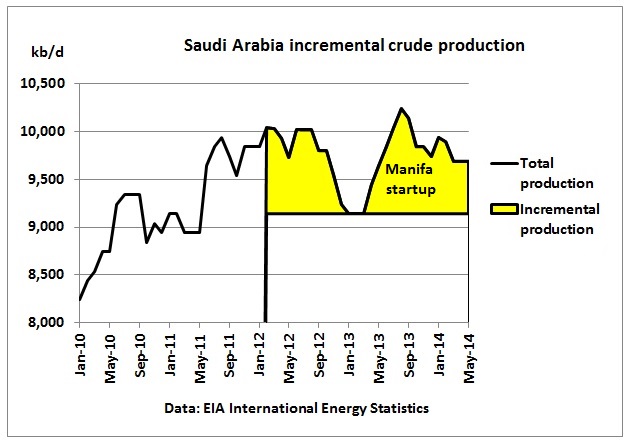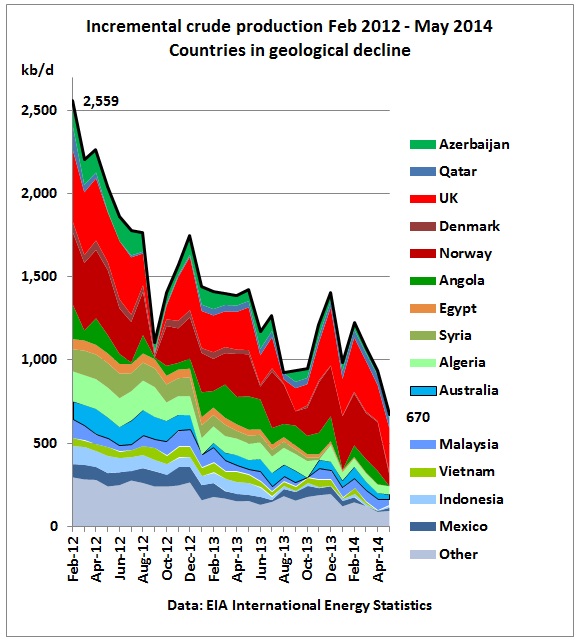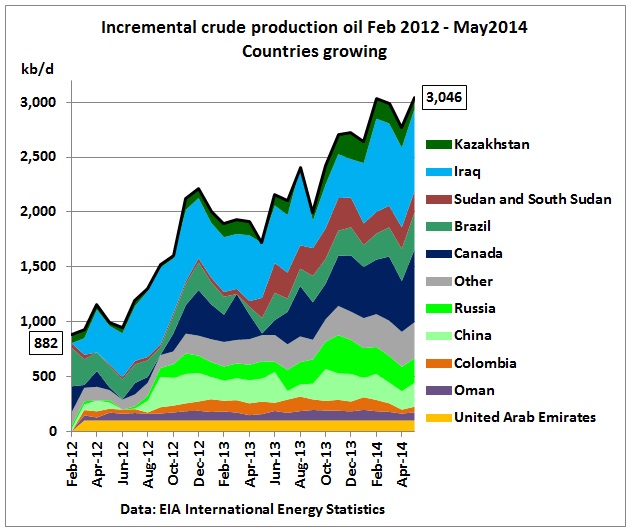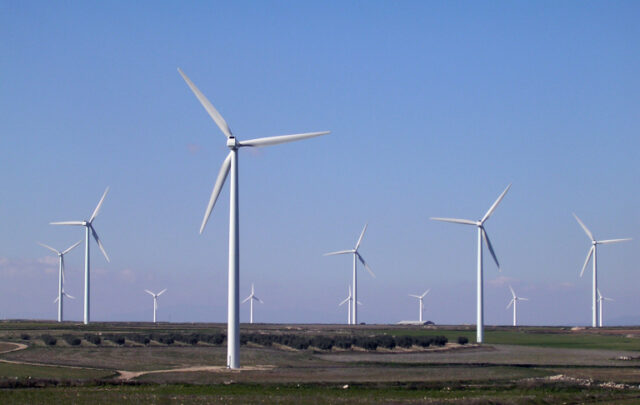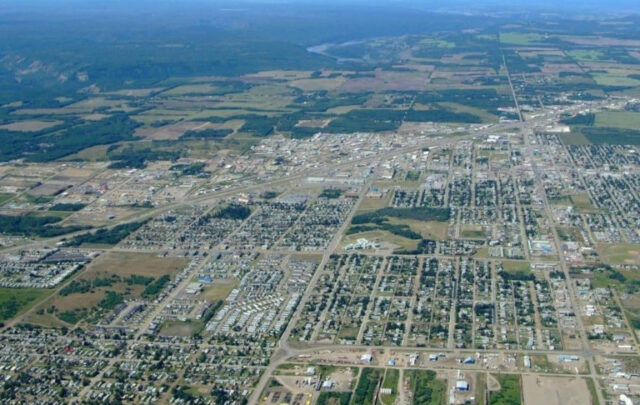We use the period starting with January 2010 when crude production had come back to 2005 levels after the exceptional year of 2009.
US shale oil growth covers up production drop in rest-of-world
September 17, 2014

Fig 1: US crude oil vs crude oil in rest-of-world
While US shale oil production is growing, there was a drop in crude production in the rest of world since February 2012 of almost 2 million barrels/d. How did this come about? As usual, there is decline and growth and then we have geopolitics. The following graphs show how much is contributed by whom. Incremental oil production is calculated as monthly oil production minus the minimum monthly production in a given period:
Fig 2: Incremental Saudi crude production (yellow area) in relation to total production
This is an example how incremental production is defined. The drop in Saudi production in the last quarter of 2012 and 1st half of 2013 has not been explained. There is usually a production drop around September (less direct fuel oil burn in power plants) by about 700 kb/d but the above drop was too long compared to previous seasons. The offshore Manifa oil field started up in April.
We can see that maximum Saudi crude production did not stay above 10 mb/d for very long.
Fig 3: Incremental crude oil Feb 2012-May 2014 in the declining group
Incremental crude production in this group declined from 2,560 kb/d to 670 kb/d or around 1.9 mb/d. Out of a production of 17.6 mb/d in Feb 2012 this is a decline rate of 4.8% (seasonally adjusted 3.8%). Note that North Sea production is zigzagging quite a lot mainly due to maintenance periods but the declining trend is clearly visible.
Fig 4: Incremental crude production of growing group
Incremental crude production in this group increased from 882 kb/d to 3,046 kb/d or 2.2 mb/d. The largest contribution came from Iraq. Whether this growth can continue is very much in doubt given the civil strife in this country. Russia and China increased their production in late 2012 (and Russia again in late 2013 but since then could not hold this level sustainably. The Russian Ministry of Finance had warned in July 2014 that their oil production will decline in 2016. Sudan came back and Canadian syn crude from tar sands increased, but with interruptions like in the 1st half of 2013. Brazil is to be monitored whether pre-salt oil can offset decline in legacy fields.
Fig 5: Incremental crude production in geopolitical group
In this group we see the impact of sanctions on Iran and the unrest in Libya. Saudi Arabia could not sustainably offset production drops in Iran and Libya (although the type of oil is also playing a role) so Saudi’s role of swing producer is in doubt. Nigeria is another difficult case. In total, incremental production dropped from around 3 mb/d to 0.8 mb/d.
Altogether now.
Fig 6: Incremental crude production by group
Growing incremental production more than offset declining production as a result of syncrude from Canadian tar sands. Without this unconventional oil the growing group would not have been able to compensate for decline.
Conclusion:
The world is transfixed on growing world crude production driven by US shale oil but forgets to look what is happening under this remarkable growth curve. We find a production drop in the rest-of-world since February 2012, mainly caused by geopolitics (Iran), civil strife (Libya), corruption (Nigeria) and a poor performance of Saudi Arabia. Declining crude production in one group of countries could still be offset by a growing group, but only because of unconventional oil from Canada and conventional oil from the Southern part of Iraq. Dick Cheney is now praying for the oil fields there.



